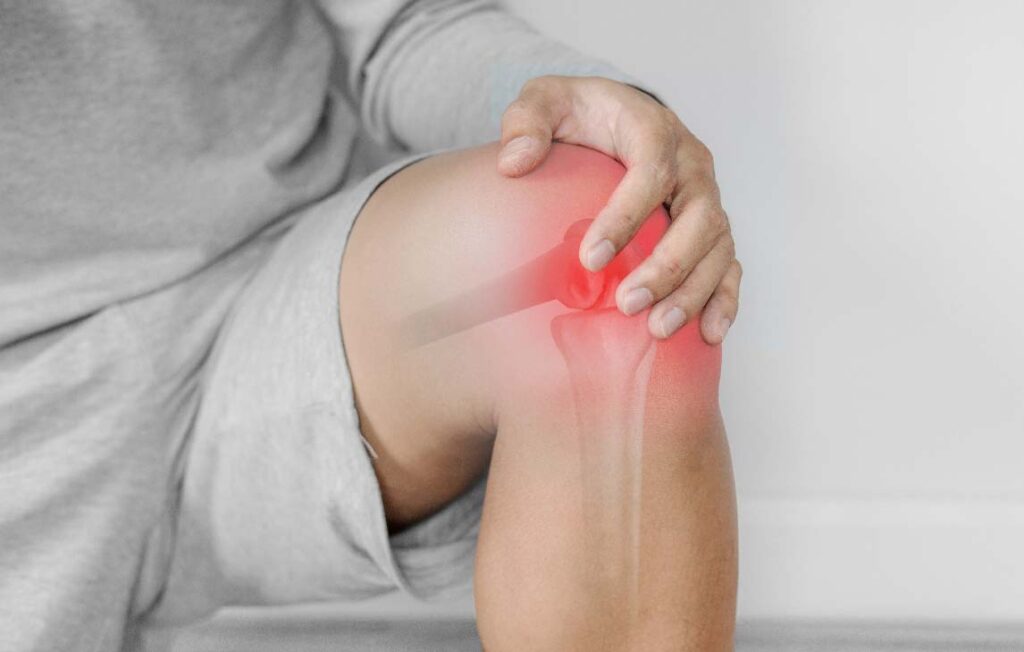Treatment & Recovery
Benign bone tumours are non-cancerous growths that develop in the bones. While they do not spread to other parts of the body, they can cause pain, swelling, and structural weakness, affecting mobility and function. Some benign tumours resolve on their own, while others may require monitoring or treatment to prevent complications.
For cases where the tumour causes pain, functional impairment, or the risk of fracture, surgical removal is often recommended to restore bone integrity and prevent further issues.
Common Types of Benign Bone Tumours
- Osteochondroma – A cartilage-capped bony growth, often found near the growth plates of long bones.
- Enchondroma – A cartilage tumour that commonly forms inside the bones of the hands and feet.
- Giant Cell Tumour – A locally aggressive tumour affecting the ends of long bones.
- Unicameral Bone Cyst – A fluid-filled cyst that can weaken bones and increase fracture risk.
- Aneurysmal Bone Cyst – A blood-filled bone cyst that can expand and cause pain or deformity.
- Osteoid Osteoma – A small but painful bone lesion that commonly affects the long bones.
Causes & Risk Factors of Benign Bone Tumours
- Genetic Factors – Some bone tumours are linked to hereditary conditions.
- Growth Abnormalities – Rapid bone development during childhood and adolescence.
- Previous Bone Injuries – Trauma or fractures may trigger abnormal bone growth.
- Hormonal & Metabolic Factors – Certain conditions can influence bone growth patterns.
Signs & Symptoms of Benign Bone Tumours
- Persistent pain or tenderness, often worsening at night
- Swelling or a noticeable lump near the affected bone
- Restricted movement or stiffness in nearby joints
- Weakened bone structure leading to fractures
- Changes in bone shape or alignment
Diagnosis of Benign Bone Tumours
- Physical Examination – Assessing swelling, pain, and functional limitations.
- X-rays & CT Scans – Identifying tumour size, shape, and bone involvement.
- MRI Scans – Evaluating soft tissue and cartilage components.
- Bone Biopsy – Confirming the tumour type through microscopic examination.
Surgical Treatment for Benign Bone Tumours
- Curettage & Bone Grafting – The tumour is scraped out, and the cavity is filled with bone graft material to restore strength.
- En Bloc Resection – Complete removal of the tumour and surrounding bone when necessary.
- Internal Fixation & Reconstruction – Bone plates, screws, or rods may be used to stabilise the bone after tumour removal.
- Minimally Invasive Techniques – In select cases, modern surgical approaches such as radiofrequency ablation may be used to destroy tumour cells with minimal tissue disruption.
Recovery & Rehabilitation After Tumour Surgery
- Post-Surgical Monitoring – Regular follow-ups to check for recurrence.
- Physiotherapy & Strength Training – Restoring mobility and function.
- Bone Health Optimisation – Nutritional guidance for strong bones.
- Gradual Return to Activity – Safe reintegration into daily and sports activities.
Why Choose Advanced Orthopaedics for Benign Bone Tumour Surgery?
Specialist Bone & Joint Care
Led by Dr Sarbjit Singh, a Senior Consultant Orthopaedic Surgeon, our clinic provides diagnosis and tailored surgical treatment for benign bone tumours.
Comprehensive Treatment Approach
From minimally invasive procedures to complex reconstructive surgeries, we ensure the best possible care for each patient.
Personalised Rehabilitation & Follow-Up Care
Our structured recovery programs focus on restoring function, preventing complications, and promoting long-term bone health.
Take the Next Step
If you or a loved one requires surgical treatment for a benign bone tumour, early assessment and intervention can prevent complications. Schedule a consultation with our team at Advanced Orthopaedics to discuss the best treatment options for your condition.





